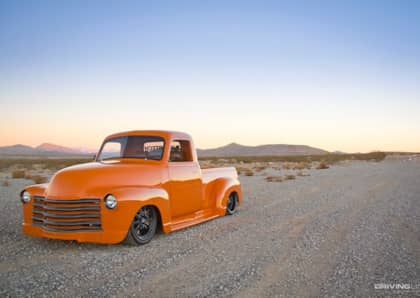Centrifugal vs. Roots vs. Twin-Screw: How To Choose The Right Supercharger For Your Truck
A supercharger is one of the most cost-effective ways to add power to your truck. Dollar-per-dollar, it's hard to beat the value proposition of effectively 'boosting' the displacement of your stock motor by way of a supercharger's forced induction. Reasonably reliable and easy to install, a supercharger is a popular upgrade for anyone looking to improve both straight-line speed or towing and hauling capability.

Of course, not every supercharger design provides the same kind of benefits, and it's worth diving into the details of what your options are before committing to a specific package. There are advantages and disadvantages to choosing one type of supercharger over and another, and unsurprisingly, the one that's right for you depends entirely on your driving habits.
Centrifugal Supercharger
One of the most common supercharger designs, centrifugal blowers offer a number of advantages that have made them popular on the aftermarket.

The first is their relatively compact form-factor. Looking very much like a traditional turbocharger with a rounded, shell-like casing, their small size makes them easy to package in almost any engine bay, as they can be mounted on either side of the front of a motor. Their operation is similar to a turbo, too, as they rely on a belt or gear attached to the crankshaft that uses its centrifugal force in order to spin up and compress air using a high-RPM impeller before feeding it into the motor.

Centrifugal superchargers are prized for their efficiency, which translates into less heat and lower parasitic drag on the engine. Heat transfer to the motor itself is also greatly reduced, given that the supercharger isn't in direct contact with the engine itself. Finally, they are often the most affordable superchargers on the market.

The main disadvantage of a centrifugal design is that its performance is directly related to engine speed in a way that other supercharger types avoid. Like a turbo, centrifugal units compress more air the faster they spin, which means they don't offer much boost at lower RPM. The flip side is that boost matches an engine's natural power band, increasing output throughout the entire rev range.

In a truck or SUV, a centrifugal supercharger offers a balance between an all-around improvement in power in daily driving with more of a top-end gain as compared to other designs. It's also a good choice for buyers looking to maximize horsepower numbers, simplify installation, and keep under-hood heat to a minimum.
Roots-Type Supercharger
The most traditional automotive supercharger is the roots-type. This blower mounts on top of an engine and uses a pair of rotors to push a high volume air into a motor, where it compresses inside the manifold and the cylinders (making it more of an air pump, as the compression doesn't occur in the supercharger itself). The rotors are driven by a pulley that is attached to the crankshaft by a belt.

A roots-type differs significantly from a centrifugal supercharger in that it is a 'positive-displacement' design. This means that regardless of engine speed, it is always pushing a specific volume of air. In turn, full boost is available from idle, which translates into significant torque right off the line along with linear power being added as engine speeds increase. They are also known for being extremely reliable.

Where a roots supercharger falls short is in efficiency and heat generation. Its position on top of a motor makes it prone to heat soaking, and the hotter air it sends into the engine often requires a charge cooler in order to maintain performance (with a corresponding drop in torque at higher engine speeds due to heat). The top-mount design can be problematic in terms of hood clearance, and roots designs are also fairly heavy, which is never good for something positioned so high in the engine bay.

Roots-type superchargers are popular in drag racing where instant-on torque is crucial and heat-soak over the course of a quarter mile isn't as big of a concern. For truck applications, however, that low end torque is a boon while towing or hauling, and at highway speeds with good airflow the heat issues associated with a roots-type blower are minimized.
Twin-Screw Supercharger
A twin-screw supercharger is a variation on the positive-displacement design that compresses the air inside its casing by spinning a pair of screw-like rotors that feature meshed lobes, and then sends that compressed air into the engine. It's a more complicated and more expensive supercharger, but at its core this top-mount blower follows the same performance profile as the roots-type: big low-RPM torque right from idle, and great mid-RPM power with a drop-off as you approach redline.

A twin-screw requires a fair bit of power to spin, which means more parasitic drag on the engine versus a centrifugal design, but less than a roots. Twin-screw designs are more efficient than a roots, and almost all run at lower temperatures, but they still benefit from the use of an intercooler due to its position on top of the motor. By compressing air inside the supercharger rather than in the engine, boost is also delivered more quickly with a twin-screw design.

Paying more for a twin-screw over a roots is going to depend on whether you find yourself operating your truck in an environment where heat and efficiency are going to play a major role. Hot climates or more abusive driving in the form of heavier loads or hardcore off-roading could push you towards a twin-screw.
More From Driving Line
- What's it like to daily-drive the craziest supercharged muscle car on the market? We find out with the 797 horsepower Dodge Challenger SRT Hellcat Redeye.











